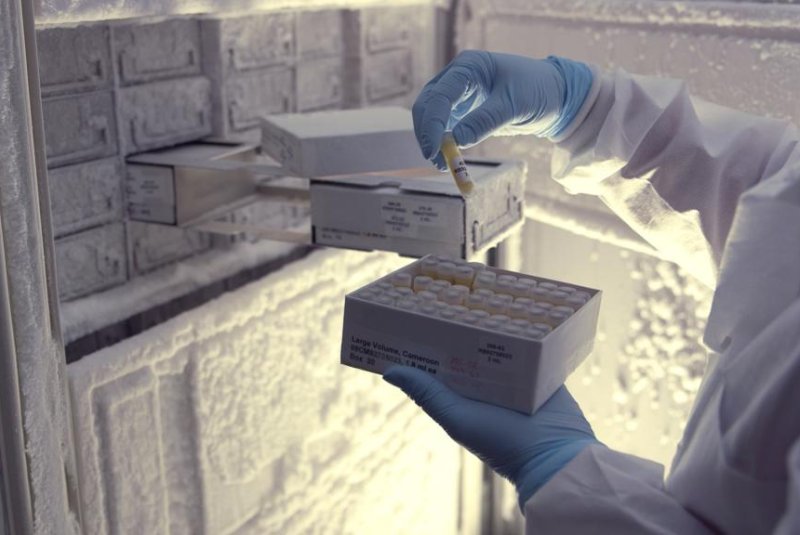Researchers at Abbott Diagnostics have identified a new subtype of HIV, the virus that causes AIDS. Photo courtesy of Abbott Diagnostics.
Nov. 7 (UPI) -- A new subtype of HIV has been discovered by scientists, but they say it can be identified with currently available diagnostic tests and should respond to existing treatments.
The team of "virus hunters" at Abbott Diagnostics, makers of tests for HIV and hepatitis, successfully isolated the new subtype, called subtype L, after analyzing a blood specimen collected in 2001 for a clinical trial in the Democratic Republic of the Congo, according to research published Wednesday.
They were able to generate a new genome for the subtype, which should help researchers hoping to keep pace with the rapidly mutating and quick-evolving virus.
"This might sound scary to people but it really doesn't impact people who already have HIV," Mary A. Rodgers, principal scientist at Abbott, told UPI. "It's just a new kind of HIV that's out there and the good news is we have a test that can identify it, and we don't expect there to be any differences in response to treatment."
Rodgers and her team are always looking for new strains of viruses like HIV, which continues to affect tens of thousands worldwide annually, including nearly 40,000 Americans. Subtype L, she said, is part of HIV Group M, which accounts for 90 percent of infections worldwide.
Notably, it is part of the "larger family" of HIV strains that are susceptible to pre-exposure prophylaxis, or PrEP, a drug regimen designed to reduce risk for HIV infection. It is the first virus subtype to be identified since 2000, the year the subtype classification system was created.
As part of their work, Rodgers and her colleagues have tested almost two thirds of the world's blood supply, and collected samples of HIV-infected blood from 45 countries. To date, she said, there's no indication that Subtype L has a "mutation profile" that will make it resistant to currently available HIV treatment regimens.
"But now that we know it's out there, we can study it," she explained. "This is why we're always on the case. The only way to prevent new outbreaks of HIV, and develop tests and treatments to keep up with the virus is to proactively look for new strains. This discovery is proof for us that we need to keep looking."















